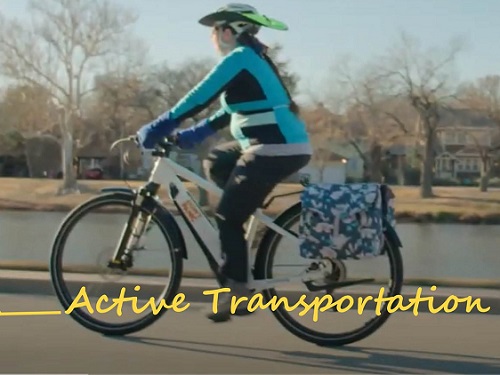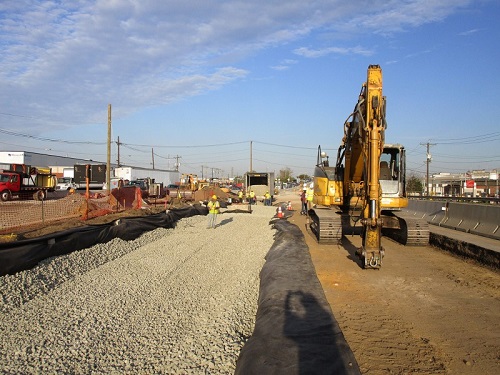A revised active transportation plan or ATP recently issued by the Kansas Department of Transportation seeks to boost walking, bicycling, safe wheelchair use, skateboarding, and non-motorized vehicle mobility options across the state.
[Above photo by Kansas DOT]
Developed with extensive input from state residents – with guidance from various state agencies and partners as well as national and local experts in planning, design, and safety – the new plan is expected to serve as a guide for Kansas DOT and communities statewide on how to include and promote active transportation when planning roads, bridges, and other transportation infrastructure projects.
“Providing access to safe, direct and continuous routes for people whether they are driving, walking or cycling is essential for a healthy multimodal transportation system,” said Calvin Reed, acting secretary for Kansas DOT, in a statement.
“The vision of the ATP is for Kansas to be a place where people of all ages, abilities and backgrounds have safe and convenient active modes of travel available throughout the state,” he noted.
“This plan provides communities with information to develop active transportation opportunities through improved planning, design and partnerships with state agencies,” added Matt Messina, multimodal bureau chief for the agency.
“Whether Kansans use active transportation regularly, rarely or somewhere in between, infrastructure that supports all modes of transportation is critical for residents,” he pointed out.
Kansas DOT plans to host “Bike, Walk, and Roll” webinars starting May 24 to detail how local communities can help implement its new ATP. The agency is also hosting in-person “ATP Summit” Sept. 20-22 to offer more insight on the transportation options within the new plan.
State departments of transportation across the country are beefing up efforts to provide more active transportation options to their residents.
For example, the Oklahoma Department of Transportation is working on its first-ever active transportation plan – a policy toolkit that can be used internally and by Oklahoma counties and towns as engineers and designers look to develop more people-friendly infrastructure.
The plan will address walking, biking, “wheelchairs and mobility scooters, pedal and electric scooters, electric bikes, skateboards, and other similar wheeled vehicles,” according to a website developed by the agency that details the plan’s contents.
The finished product will be more of a policy guide than a rule book, said Shelby Templin, an Oklahoma DOT certified planner who is heading up the plan’s development.
“We’re hoping this will guide our engineers and designers, in-house, as well as provide a starting-off point for smaller communities that may not have the resources,” she said. “It also will give the multi-modal group more of a leg to stand on for project development.”
The agency said its Active Transportation Plan is expected to be completed this summer and opened to a 30-day public comment period. In the fall, Oklahoma DOT expects to submit the plan to the Oklahoma Transportation Commission for approval.
The Washington State Department of Transportation unveiled a formal Active Transportation Plan in December 2021 – a plan that subsequently won the 2022 America’s Transportation Awards contest’s “People’s Choice Award.”


